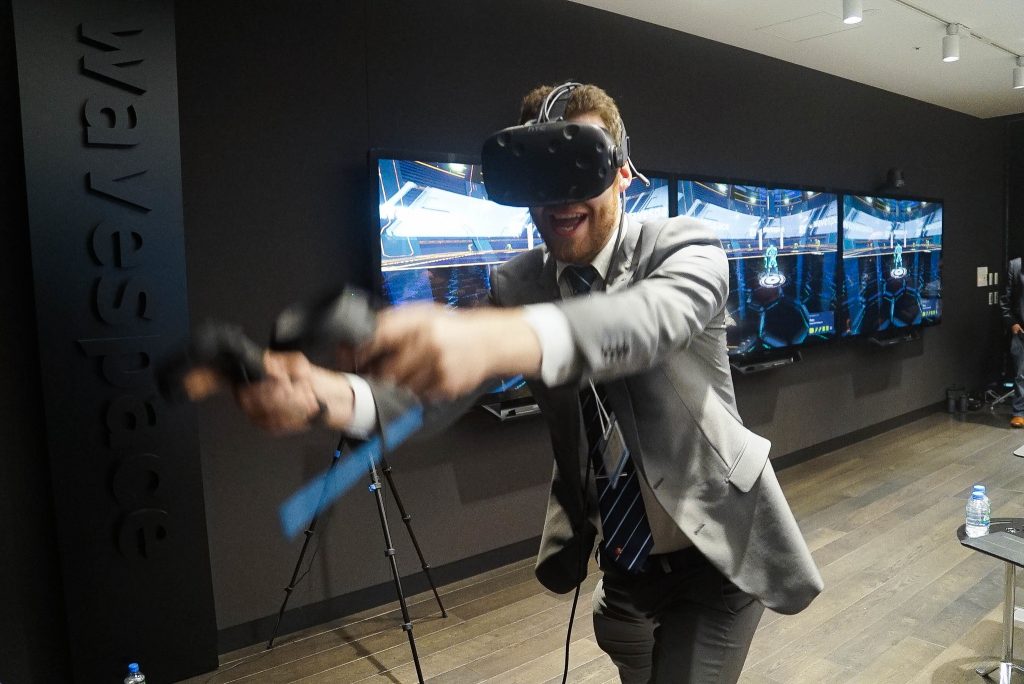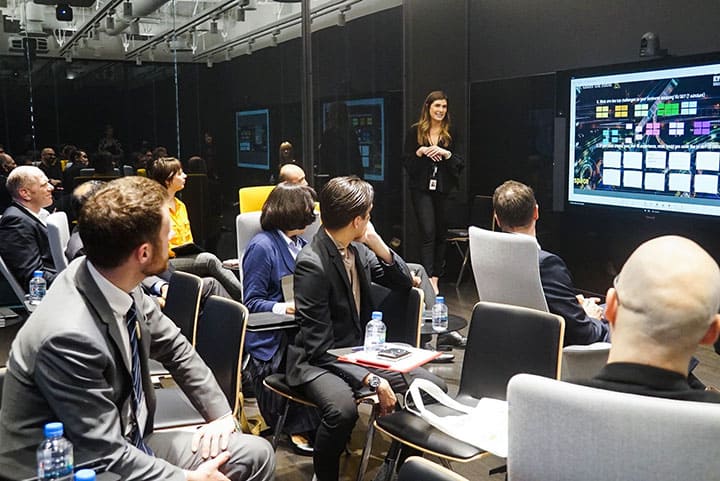Member? Please login
How VR is transforming business – Lessons from EY and Shadow Factory

Written by Sterling Content
June 7, 2019
Past Event Round Ups
BCCJ members visited EY’s new digital innovation centre, wavespace, on April 25 for an interactive workshop on what AR and VR can offer businesses. The event was the latest in the BCCJ’s “Under the Hood” series, set up to deliver insights on digital and technology innovation as part of the BCCJ’s 5.0 plan.
EY’s wavespace
Helen Bentley, director at EY, introduced wavespace, one of 20 sites worldwide offering workshops, solution showcases, roundtables and seminars to help the firm’s clients in today’s Transformative Age. The goal is to craft holistic solutions needed to tackle increasingly complex issues.
“We noticed that customers are expecting more than ever before from companies, especially in regard to digital. Companies are having to respond quicker than ever before but, internally, they have quite a traditional mindset,” she said.
To overcome this challenge, wavespace offers workshops using the concept of “suits plus jeans,” to bring together strategic talent (suits) and transformative talent (jeans) within organisations. As “Suits” have expertise in business practices, such as regulation, tax, risk and compliance and “jeans” have disruptive ideas and creative thinking, collaborative sessions help solve problems and foster innovation.
Through the wavespace network, EY has acquired 27 digital firms, enabling the firm not only to create strategy, but realize it, too. Bentley reported that EY has helped clients develop new ideas and deliver proof of concept in merely six weeks, thanks to its technology experts.
Operating alongside wavespace are 26 EY innovation centres worldwide, each with its own specialism. London, for example, works on customer research, Tel Aviv offers incubator hubs for start-ups, Paris is driving innovation in cyber security and Tokyo is expert in AI, blockchain and cyber.
Visiting Tokyo with EY for the Nikkei AI Forum was Devin Ehrig, partner at Shadow Factory, a Hong Kong-based production company specialising in immersive media.
He described VR as “extended reality” that exists on a spectrum. At the top end are fully immersive experiences such as those provided by VR headsets. At the low end, meanwhile, are augmented or mixed reality experiences such as Pokemon Go, in which the virtual world is overlaid on the real world.
With so many options, the immersive experience that organisations should choose for their needs depends on what viewpoint they want the consumer to have, said Ehrig. For example, consumers can be the actor in a first-person perspective or the spectator in a third-person perspective.
He shared that a tailored approach to VR content can boost understanding and retention of complex, detailed information while increasing interest and even the likelihood of sales conversion.
“When people are engaged and interacting with an experience, they think about it, recall it and tell it differently,” he said, adding that they can feel excitement, interest and even joy.


Applications for business
VR is proving valuable to organisations. According to Ehrig, it has been most quickly adopted in creative industries such as advertising, branding and social media, but healthcare providers, government agencies, manufacturers and retailers have also begun to use the technology.
One popular application is sales and engagement. Using a content management solution and cloud-based tools, global firms can use VR to showcase products in various sites from a central location, reducing the need for travel. The result is guaranteed consistency of messaging and lower costs. Moreover, through VR, customers can get a teaser of what they would get from purchasing a product or service, such as via views from a hotel or a surfing experience.
VR is also being used in visualisation, bringing fuzzy data to life. In the military, PTSD sufferers have reported improvement in their symptoms after reliving their traumatic experiences in a controlled environment using VR.
Drawing on VR’s potential in engagement and visualisation, schools, colleges and other education providers are also seeking immersive technology. In Hawaii, for example, schools are bringing lessons on specialised subjects such as historical and scientific research to remote islands via VR.
In training, firms can reduce costs, evaluate progress and improve delivery with VR. In the United States, Walmart is using VR to train its customers to cope with the challenges of Black Friday sales and Iberia Airlines has adopted VR to train its cabin crew. Ehrig shared that Shadow Factory is creating a platform to distribute US-accredited surgical training to hospitals and medical staff in remote areas across Asia. Even time spent training on cadavers is being partially replaced by training using holographic models, in efforts to improve efficiency and reduce long-term costs.
At EY, Bentley reported that employees’ VR-supported training has proved effective. As everyone tackles the same scenarios and answers the same questions, the system is able to track and compare employees’ vocal and physical responses, thereby improving the efficiency of training.
Ehrig predicted that collaboration among teams will also become possible as VR develops. The communication between holograms in real time available now, for example, will become more prolific in five years as the cost involved falls.
Challenges and opportunities
BCCJ members shared that their organisations might more readily use VR for training and collaboration than sales due to ease of adoption. Yet, they recognised VR’s potential as a sales tool, as well as opportunities to utilise immersive technologies across sectors. They opined that opportunities might be most plentiful in tourism, education, entertainment and sport.
On considering the introduction of VR in their organisations, BCCJ members listed cost and time required as key challenges. Of concern were also the skill of staff to use the technology, hesitancy from investors and compliance with security and privacy regulations.


Produced by Sterling Content for the BCCJ







